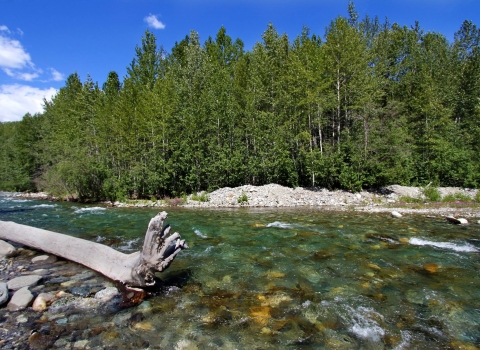WASHINGTON — The Department of the Interior today announced that the U.S. Fish and Wildlife Service has finalized Endangered Species Act (ESA) revisions to improve participation in its voluntary conservation programs. The revisions promote native species conservation by clarifying and simplifying permitting under Section 10(a) of the ESA, encouraging more resource managers and landowners to engage in these voluntary programs.
President Biden’s America the Beautiful initiative set the nation’s first-ever goal to conserve and restore at least 30 percent of U.S. lands and waters by 2030. The 10-year, locally led and nationally scaled initiative lifts up efforts to protect, conserve, connect and restore the lands, waters and wildlife upon which we all depend. One of the initiative’s goals is to enhance wildlife habitat and improve biodiversity potentially preventing listings and assisting with species recovery through voluntary measures.
“The Endangered Species Act’s achievements are demonstrated across our nation with hundreds of at-risk species now stable or improving thanks to the collaborative actions of federal agencies, state, Tribal and local governments, industry, conservation organizations and private citizens,” said Secretary Deb Haaland. “As we look to the future of ESA implementation, support from President Biden’s Investing in America agenda and the America the Beautiful initiative are being leveraged to ensure the ongoing conservation of our species and their habitats.”
"These revisions reflect decades of learning that we can apply to ensure the Endangered Species Act is relevant for the next 50 years. They also help build on years of collaborative conservation actions on the ground,” said U.S. Fish and Wildlife Service Director Martha Williams. “Improvements to the rule will encourage more landowners to engage in conservation for declining, candidate and listed species. Through this type of stewardship, we are investing in the future, creating a legacy of resilient habitats to withstand environmental challenges and changes.”
The revisions improve implementation of the conservation programs associated with the issuance of enhancement of survival and incidental take permits under Section 10(a) of the ESA. One way the Service achieves this is by combining safe harbor agreements and candidate conservation agreements with assurances into one agreement type called a conservation benefit agreement. The Service also adds flexibility to allow permits for both listed and non-listed species and clarifies the requirements for complete applications.
These revisions, which will increase efficiency by reducing the time and cost to develop and negotiate permit applications, will encourage more individuals and companies to engage in conservation benefit agreements and habitat conservation plans, generating greater conservation results overall. These revisions do not significantly change the current implementation of the Section 10 program or expand the requirements for species protections.
Section 10(a) of the ESA provides a voluntary mechanism for authorizing take of listed and non-listed species associated with beneficial conservation actions or otherwise lawful activities. With some exceptions, the law prohibits taking protected species unless authorized by a permit from the Service or the National Marine Fisheries Service.
The ESA was enacted in 1973 as a response to the declining populations of many species of animals and plants. The Act was designed to protect and recover species at risk of extinction and to promote the conservation of ecosystems and habitats necessary for the survival of those species as well as the communities that rely on healthy ecosystems.
The ESA provides for the protection of ecosystems, the conservation of endangered and threatened species, and the enforcement of treaties related to wildlife preservation. This landmark law has been highly effective and credited with saving 99% of listed species from extinction. Thus far, more than 100 species of plants and animals have been delisted based on recovery or reclassified from endangered to threatened based on improved conservation status, and hundreds more species are stable or improving thanks to the collaborative actions of Tribes, federal agencies, state and local governments, conservation organizations and private citizens.
The final section 10(a) rule will publish in the Federal Register on April 12, 2024, and is effective 30 days from publication. More information on the final rule is available at http://www.regulations.gov/ by searching docket number FWS–HQ–ES–2021–0152.
For information about section 10 of the ESA, please visit the Service's website.
-FWS-
The U.S. Fish and Wildlife Service works with others to conserve, protect and enhance fish, wildlife, plants and their habitats for the continuing benefit of the American people. For more information, visit www.fws.gov and connect with us on social media: Facebook, Instagram, X (formerly known as Twitter), LinkedIn, Flickr and YouTube.

